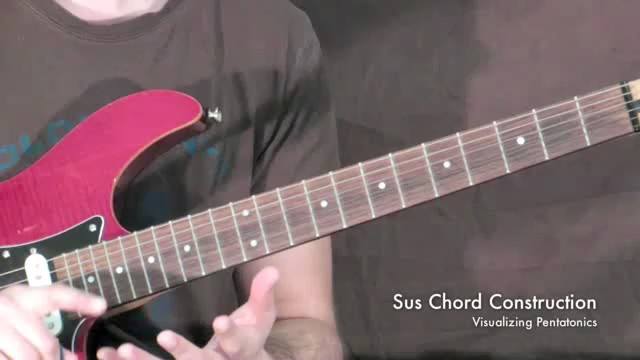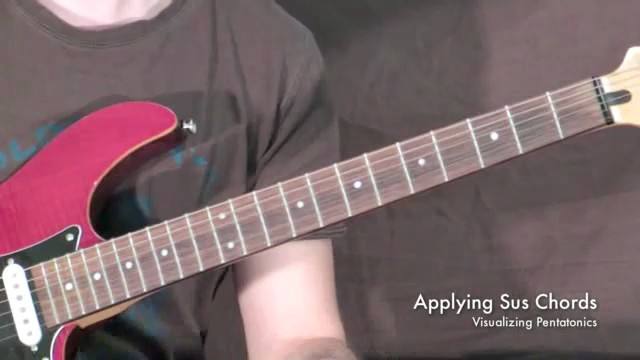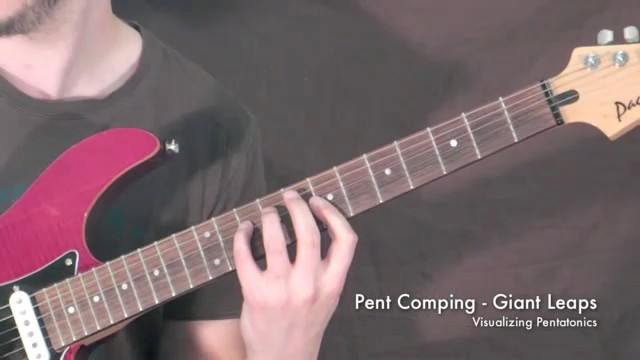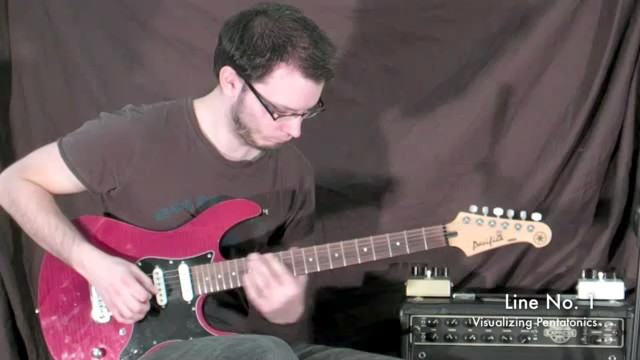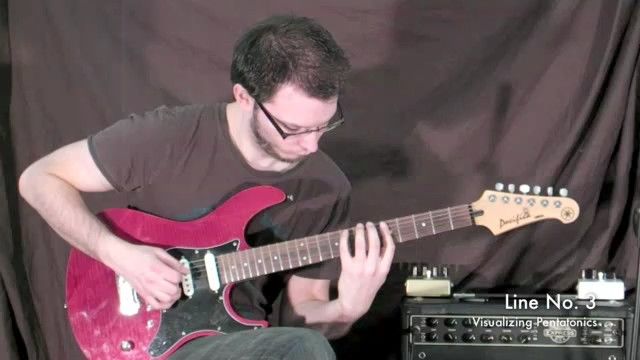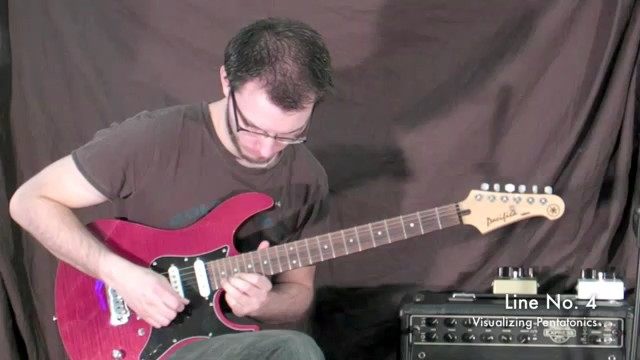-
SaveCompleteInfo1
-
SaveCompleteInfo2
-
SaveCompleteInfo3
-
SaveCompleteInfo4
-
SaveCompleteInfo5
-
SaveCompleteInfo6
-
SaveCompleteInfo7
-
SaveCompleteInfo8
-
SaveCompleteInfo9
-
SaveCompleteInfo10
-
SaveCompleteInfo11
-
SaveCompleteInfo12
-
SaveCompleteInfo13

-
SaveCompleteInfo14

-
SaveCompleteInfo15

Instructor: Tom Quayle Level: Intermediate Topic: Scales Style: Fusion
Excerpt: Hi there guys! Welcome to this tutorial on visualizing pentatonic scales for guitar. This tutorial aims to help you break out of the rut that the typical box pattern approach to learning pentatonics can produce. If I were to put money on it, I'd bet that most of you out there know one or two, if not more, pentatonic shapes based on these box patterns. Howe...
Media Length: 1:48
Instructor: Tom Quayle Level: Intermediate Topic: Chords Style: Fusion
Excerpt: The first thing we have to be able to do in order to use the visualization technique described in this tutorial is understand the concept of a sus4 chord. A sus4 chord is a chord containing a Root, 4th and 5th (R, 4, 5) An example of this would be a Csus4 chord. If we take this chord as constructed from a C major scale (C D E F G A B), the root would be C,...
Media Length: 2:57
Instructor: Tom Quayle Level: Intermediate Topic: Scales Style: Fusion
Excerpt: So, how do these sus4 chords relate to our minor pentatonic scale? Well, every minor pentatonic scale contains a couple of sus4 chords which we're going to focus on. Let's take Am pentatonic as our example. This scale contains the notes A, C, D, E and G. From these notes we can construct two sus4 chords a tone apart - Gsus4 containing the notes G, C and D a...
Media Length: 2:23
Instructor: Tom Quayle Level: Advanced Topic: Scales Style: Fusion
Excerpt: One of the best uses I've found for this technique is for comping. In other words, for playing chord based accompaniment or solos over chord changes or a static groove. Normally you'd rarely think of using a pentatonic scale to comp, but in using this sus4 chord visualization approach we can do so with ease. The idea here is that we don't always have to pl...
Media Length: 2:40
Instructor: Tom Quayle Level: Intermediate Topic: Scales Style: Fusion
Excerpt: Let's take this comping idea and apply it to a static groove. I know one problem many people have when playing over a static groove is knowing how to create interesting chordal ideas which don't just rely on your stock chord shapes. In the case of this particular groove, the bass player is outlining an A minor feel. This allows us freedom to be more ambiguo...
Media Length: 1:09
Instructor: Tom Quayle Level: Advanced Topic: Scales Style: Fusion
Excerpt: Here's our final comping example using pentatonic scales as our harmonic source. The chord sequence below is from a well known tune by John Coltrane. I'll name this one Giant Leaps! That should give you a clue! Normally when comping on this tune you would play literally the chord written in the chord chart or at least a derivative or substitution of that c...
Media Length: 0:40
Instructor: Tom Quayle Level: Advanced Topic: Scales Style: Fusion
Excerpt: When you apply these ideas to playing chords, you simply need to follow a few simple rules and everything should fall into place. Most fusion and jazz tunes and even some modern funk songs change key often. The first thing you must do is identify all the key areas and what modulations occur in the piece of music. Once you've done this, the next step is to w...
Media Length: 1:17
Instructor: Tom Quayle Level: Advanced Topic: Scales Style: Fusion
Excerpt: One of the great things about visualizing the pentatonics is that it allows us to create lines in addition to new comping ideas. Over the next few videos, I'll introduce you to four of the kind of lines I play on a regular basis. All of the phrases are quite technically challenging so practice them slowly, although they'll sound equally good when played at ...
Media Length: 0:52
Instructor: Tom Quayle Level: Advanced Topic: Scales Style: Fusion
Excerpt: Now, on to line playing! All of these examples are TABBED for 4ths tuning but the standard tuned versions are at the end of the tutorial. I recommend you print these out for reference as some of the fingerings are different by necessity. The great thing about pentatonic scales is that they don't contain any 'avoid' notes. A C major scale, being a seven note...
Media Length: 0:28
Instructor: Tom Quayle Level: Advanced Topic: Scales Style: Fusion
Excerpt: Line No. 2 is a descending 16th note triplet phrase utilizing stretched sus4 arpeggios built from our Am pentatonic again. I've incorporated a sneaky Dsus4 arpeggio at the beginning of the line (this works too!) but the rest is built primarily from Gsus4 and Asus4. Standard tuned version at the end of the tutorial. Remember to try this line over other chor...
Media Length: 0:28
Instructor: Tom Quayle Level: Advanced Topic: Scales Style: Fusion
Excerpt: Here is line no. 3, built exclusively from the Am Pentatonic scale. Again, I've used sus4 shapes and their inversions to create the line beginning with a Gsus4 in the 1st inversion, followed by an Asus4 in the root position. We then have the Gsus4 up an octave connected via a small linear phrase to the Asus4 in the 1st inversion, and then another 3-note-pe...
Media Length: 0:25
Instructor: Tom Quayle Level: Crazy! Topic: Scales Style: Fusion
Excerpt: Here is our final line built from the Am pentatonic scale. This example makes the most blatant use of it as far as the sus4 shapes go. If you analyze the line, you'll see that we're simply playing each inversion of Asus4 and Gsus4 rising up the neck from one end to the other. The key here is to keep all your position shifts as smooth and in time as possibl...
Media Length: 0:29
Instructor: Tom Quayle Level: Intermediate Topic: Scales Style: Fusion
Excerpt: Here's the Am groove backing track. Remember that we're using the two sus4 chords built from the root and b7 of the scale, so in this case: Asus4 and Gsus4 from the Am pentatonic scale. Use these two chords in all their inversions for your comping and soloing. I'm sure that in no time you'll find yourself relying less and less on standard chord shapes and ...
Media Length: 1:17
Instructor: Tom Quayle Level: Advanced Topic: Scales Style: Fusion
Excerpt: Here's the backing track for Giant Leaps. By the way, the original version of this tune is at about 280bpm! Guys like Kurt Rosenwinkel use this sus chord technique effortlessly at that tempo. Back to practicing for me then! Remember, use the following sus4 chords for each of the pentatonic scales within the chord sequence : Abm pentatonic - Absus4 and Gbsu...
Media Length: 2:26
Instructor: Tom Quayle Level: Advanced Topic: Scales Style: Fusion
Excerpt: Here are the TABS in standard tuning for this tutorial. FIrst you'll see the Csus4 inversions, then below you'll find all 4 line playing exercises. Cheers, Tom
Media Length:


